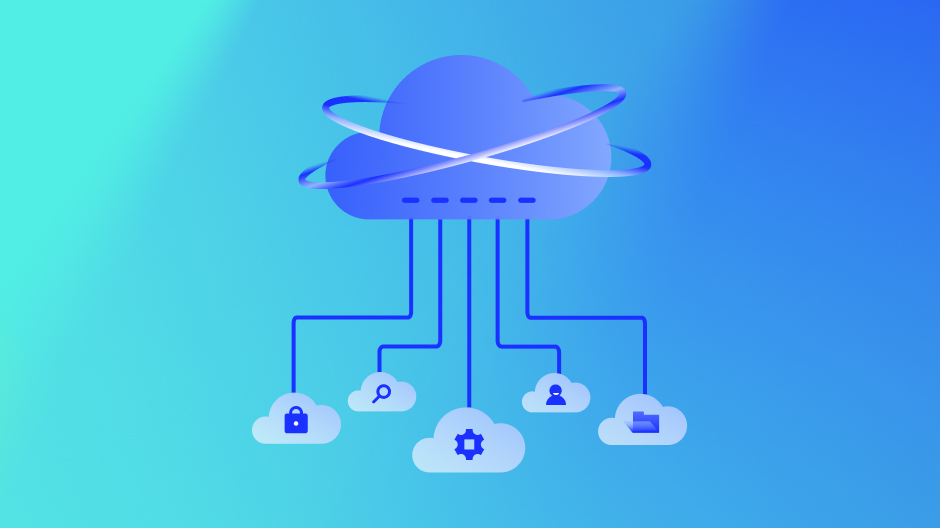Implementing SLAs, SLIs, and SLOs is essential for effective monitoring and maintaining optimal system performance. As companies grow, they may add a significant number of KPIs that burden their IT assets, leading to system sluggishness and employee complaints. Developers must balance business needs with IT processes, and SLAs, SLIs, and SLOs can help them achieve this balance.
In this article, we’ll explore how SLAs, SLIs, and SLOs play critical roles in monitoring, allowing IT teams to set performance objectives, track metrics, and identify areas for improvement. By leveraging these essential monitoring tools, organizations can gain a deeper understanding of their systems and make data-driven decisions to optimize system performance.
What Is an SLA (Service Level Agreement)?
An SLA, which stands for service level agreement, describes what can be expected when consuming services or solutions from a third-party vendor. For example, an SLA between a vendor and client might set an expectation of 99.999 percent network availability.
Most companies find that 99.999 percent of network availability meets or exceeds their needs. Vendors can potentially offer even more reliable availability, but even the smallest improvement requires tremendous resources that add expenses to the service. Unless a company cannot stand losing five minutes and 15 seconds of connectivity per year, they will choose the more affordable option.
SLAs don’t stop at ensuring network availability. Other common metrics defined in SLAs include:
- Security-related – the vendors’ obligation for installing antivirus updates and patches as well as taking preventative measures to prevent data breaches and other cyber attacks.
- Defect rates – the number or percentage of errors that the client can accept from the vendor. Defects can include anything from incomplete data backups to network errors. Ideally, the SLA will define events that get counted as defects.
- Technical quality – the SLA establishes the client’s expectations for a third-party tool’s success, which could include the number of coding defects within the product or staying within a specific data range.
- Business results – business results have been added to SLAs more recently than other factors. The KPIs can vary significantly depending on the client’s industry and goals. The SLA should also define how the client and third-party provider will calculate KPIs to avoid confusion.
What Happens When Companies Fall Short of SLAs?
SLAs are binding contracts that establish real-world expectations. They should define what the service provider will do for the client. They should also define the repercussions for falling short of expectations.
SLA penalties benefit service providers and clients. Without penalties in the contract, a client could walk away from the business relationship. Technically, the service provider broke the contract, so the client has no obligation to continue the relationship. By adding penalties, service providers have financial incentives to meet goals. They also get alternatives to losing clients.
A simplified version of an SLA penalty might say, “Client A will receive $50,000 in credit for each security breach.” If a security breach occurs, the service provider pays the penalty. The penalty certainly damages their financial prospects, but they benefit from retaining the client. Repeat failures, however, could encourage clients to choose competitors upon the end of the contract.
Overall, an SLA is simply an agreement that companies make with their clients. Often, SLA’s are further broken down by SLOs and SLIs. Traditionally, SLAs and their components are typically focused on by operations teams, including those associated with the SRE team. Essentially, SLOs and SLIs break down SLAs into smaller pieces that can be measured on a technical level and are used by developer teams to gauge if they are truly meeting client expectations outlined within an SLA. All in all, SLIs form the basis of SLOs and SLOs form the basis of SLAs. Check out more about the roles of SLOs and SLIs below.
What Is an SLO (Service Level Objectives)?
SLO, which stands for service level objectives, is the goals or objectives the company must meet to satisfy the established agreement made with the client. SLOs are measured by SLIs and are typically outlined in the SLA. However, an SLA serves as the general agreement between a company and a client, whereas SLOs are used to outline specific individual metric expectations that a company must meet to satisfy a client’s expectations.
When possible, service providers want to add some room for improvement to their SLOs. It’s difficult, if not impossible, to predict how an unexpected event will influence a company’s ability to provide services. For instance, a service level objective might state that the service provider will back up the client’s data hourly. When technical difficulties make that goal impossible, they can back up the data as soon as possible without damaging their contractual obligations.
What is an SLI (Service Level Indicators)?
SLIs, which stands for service level indicators, are where the real numbers or metrics a company is aiming to hit are outlined. Essentially, the goals or objectives outlined within the SLO are given definitive numerical expectations and these numerical expectations, generally defined as percentages, make up the SLI.
Overall, a service level indicator looks at a specific service you get from an IT company, such as a cloud service provider, and gives you a quantified view of that service’s performance. That might sound complicated to anyone outside of DevOps and other technical fields. Essentially, it means clients get straightforward, accurate data showing that the company or service provider did (or did not meet) service expectations.
Some of the most common service level indicators that companies pay close attention to include:
- Latency or response time – the total amount of time between a user sending a request and receiving a response.
- Error rate or quality – typically the quality of data and the error rate that occurs.
- Uptime – hosting services use uptime to describe the amount of time, often expressed as a percentage, that their servers are functional.
- Availability – far too many companies believe that uptime and availability measure the same thing. While uptime describes the server’s functional time, availability describes the amount of time a service, such as a company’s website and features, is available. A small disruption can lower availability without influencing uptime.
Deciding What Metrics to Measure
Service providers must market themselves as better alternatives to their competitors. Some companies try to attract clients by promising to measure an outrageous number of metrics.
Companies need to recognize that some metrics matter considerably more than others. Tracking unnecessary – or even useless metrics – can drain resources and time, making it nearly impossible for companies to provide the services they promise.
It makes more sense to take a pragmatic approach, identify critical metrics, and reserve processing power for the metrics that truly matter to clients. Others will just create distractions while siphoning away compute time and other resources essential to a service provider’s success.
What Do These Mean for SRE (Site Reliability Engineering)?
SRE often works in conjunction with DevOps, so these professionals have a deep understanding of how they can prevent mistakes from impacting their customers.
Savvy readers will notice the level of reliance that companies have on service providers and, therefore, the guarantees outlined in their SLAs, SLIs, and SLOs.
When companies compare third-party service providers, they need to take these expectations seriously. A reliable service provider will admit its past mistakes and explain how it overcomes those challenges. All tech companies stumble. The ability to adapt and resolve issues might mean more than a flawless record. For some, flawless records look rather suspicious.
From the engineers’ perspective, expectations need to meet the needs of future projects. Can the cloud service provider guarantee access to enough processing power to run software updates without causing delays on the user’s end?
Executives should bring engineers into the conversation to make sure teams will have the resources and services they need to meet current and future goals with minimal disruptions.
What Do These Mean for ITOps?
IT operations (ITOps) teams play a critical role in ensuring that systems meet business requirements and perform reliably. SLAs, SLIs, and SLOs provide a framework for measuring and optimizing system performance, allowing ITOps teams to proactively identify issues and keep systems running smoothly.
To implement SLAs, SLIs, and SLOs effectively, ITOps teams must have a deep understanding of business requirements and user expectations. This requires close collaboration with stakeholders to define service level objectives and select the appropriate key performance indicators to track.
ITOps teams must also select the right monitoring tools to track relevant metrics and alert them to potential issues. This involves establishing clear processes for incident response and escalation so that issues can be resolved quickly and efficiently.
ITOps teams can take a proactive approach to system performance, ensuring that systems meet user needs and business objectives. With the right tools and processes in place, ITOps teams can identify and resolve issues before they become critical problems, keeping systems running smoothly and minimizing downtime.
Do These Indicators Mean the Same Thing for All of IT?
SLA, SLI, and SLO have the same general meanings across areas of IT. However, an engineer’s or programmer’s concerns will differ according to what they want to accomplish.
When it comes to SLAs, SLIs, and SLOs, the need can grow exponentially depending on what the company wants the websites to accomplish. Will they use images and text-based CTAs to generate leads? In that case, processing power doesn’t become a huge concern. Does the company want to stream target videos, trigger automated interactions, and follow visitor behaviors? That requires more resources, so the developers and programmers need to pay closer attention to what they can expect from a service provider.
The level of expectations can grow even more when companies want to collect and analyze massive amounts of data for business intelligence analytics.
How Do These All Tie Into Monitoring?
SLAs, SLIs, and SLOs are essential components of effective monitoring strategies. By defining clear service level objectives and indicators, organizations can establish a baseline for acceptable system performance and identify areas for improvement. Monitoring tools can then be used to track metrics and gather data that is used to evaluate performance against these objectives.
For example, if an organization has defined an SLO of 99.9% uptime for a critical system, monitoring tools can be configured to track key performance indicators such as server response time, database query speed, and network latency. If these metrics fall outside of the acceptable range, the monitoring tool can trigger alerts to notify IT teams of potential issues.
In addition to tracking metrics, monitoring tools can also be used to collect traces and logs that provide additional insight into system behavior. These traces can be analyzed to identify the root cause of performance issues and inform future improvements.
Ultimately, effective monitoring requires a holistic approach that incorporates SLAs, SLIs, and SLOs as well as a range of tools and techniques. By leveraging these concepts, organizations can gain a deeper understanding of their systems and ensure that they are delivering the performance and reliability that their users expect.
Glossary
Was all of this too long-winded? No problem! Here’s a quick glossary of terms covered in this post:
- SLA: Service Level Agreement
- SLI: Service Level Indicator
- SLO: Service Level Objective
- Metrics: Quantitative measurements used to evaluate system performance and behavior
- Traces: A record of events or interactions within a system, used to diagnose issues or understand behavior
- Alerts: Notifications triggered by predefined conditions or thresholds, indicating potential issues or anomalies in system behavior
- Dashboards: Visual displays that aggregate and present key metrics or data points in a single view, used to monitor system performance
- APM: Application Performance Management
Originally published Nov. 12, 2021. Updated March 2023
Subscribe to our blog
Get articles like this delivered straight to your inbox








